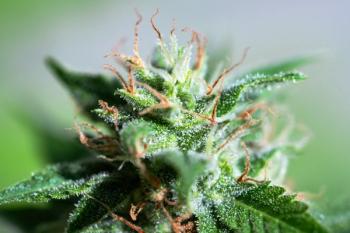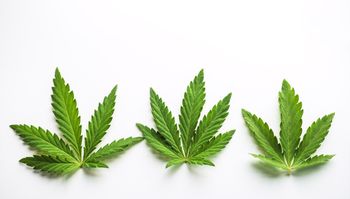
Cannabis Science and Technology
- March/April 2018
- Volume 1
- Issue 1
General Application of QuEChERS Extraction in the Isolation of Cannabinoids
In the context of efforts to develop consensus-based reference methods for cannabinoid analysis, this tutorial discusses the methods to prepare samples for analysis in consensus methods. Specifically, the steps behind the QuEChERS (quick, easy, cheap, effective, rugged, and safe) method of dispersive solid-phase extraction (dSPE) and salting out are explained as applied to the analysis of cannabinoids of interest.
Precise measurements are vital to any transaction of commerce. As the medical marijuana industry grows in the United States, in addition to standard weights and monetary measures, potency, impurities, and related measures become important. These measures are exacerbated by two external factors. First, the industry has its roots in the counterculture movement and the associated resistance to (governmental) regulation. Second, and more fundamental, since cannabis is illegal under federal law, individual states are developing their regulations on a state-by-state basis.
In addition to measuring purity, potency determination is another key factor to ensure that the dose is consistent between different forms of cannabis product. Until the industry is regulated on a more widespread level, it would not be unexpected for cannabis products to have a wide range of cannabinoid levels. Additionally, potency can vary with the stage of the growing season, the part of the plant harvested, or different plant strains.
To bring standardization to cannabis testing, especially in anticipation of future federal legalization and regulation, AOAC International has led the way—along with Spex CertiPrep and Spex Sample Prep, Sigma-Aldrich, GW Pharmaceuticals, Sciex, CEM Corporation, and SC Labs—through its working groups initiative. A draft fitness-for-purpose statement and standard method performance requirements are being considered. These will define the minimum performance characteristics necessary to evaluate quantitative analytical methods. Ultimately, quantitative methods are needed for measurements of cannabinoids in raw materials and formulations like topical creams and foods. Plans are for the required determination of five cannabinoids (see Table I) with an additional five cannabinoids listed as desirable (cannabichromene, CAS No. 20675-51-8; cannabichromenic acid, CAS No. 20408-52-0; cannabidivarinic acid, CAS No. 31932-13-5; cannabigerol, CAS No. 25654-31-3; cannabigerolic acid, CAS No. 25555-57-1; cannabidivarin, CAS No. 24274-48-4; Δ8-tetrahydrocannabinol, CAS No. 5957-75-5; tetrahydrocannabivarin, CAS No. 28172-17-0; and tetrahydrocannabivarin acid, CAS No. 28172-17-0). (See upper right for Table I, click to enlarge.) While Cerilliant has standards available for all five of the required cannabinoids, Restek, Sigma-Aldrich, API Standards, Echo Pharmaceutical, Lipomed AG, and the United States Pharmacopeia (USP) each have standards available for one or more of the cannabinoids required or desired for testing. Further information on the involvement of AOAC International with cannabis testing can be found on their website,
Surprisingly, there is little published literature on the extraction of cannabis or cannabis products for the isolation of cannabinoids before analysis. However, it seems that those involved in this testing are settling on the technique known as QuEChERS (quick, easy, cheap, effective, rugged, and safe). Developed in 2003 by Anastassiades and Lehotay (1) for the determination of pesticides in fruits and vegetables, the utility of the technique has been extended to a multitude of residues or natural products in plant matter, meats, soil, and other complex sample matrices. QuEChERS combines the well-established analytical approaches of salting out followed by dispersive solid-phase extraction (dSPE). This general scheme is outlined in Figure 1. (See upper right for Figure 1, click to enlarge.) Some vendors, such as those involved with the AOAC working group, are actively involved with developing QuEChERS for the extraction of cannabinoids from cannabis products and can be considered good partners for those laboratories involved with such determinations. To isolate cannabinoids from cannabis products for subsequent analysis, these general steps are followed:
- Before the QuEChERS extraction, the cannabis product should be ground to a free-flowing powder using an analytical mill or a coffee or spice grinder. Gummy candies cannot be easily ground, so cutting them into small pieces should suffice. For other samples that are difficult to grind, the analyst may freeze the sample before grinding and add a small piece of dry ice to the mill or grinder.
- About 1.0 g of sample is accurately weighed into a 50-mL polypropylene centrifuge tube. One difference between dried marijuana samples and the produce samples for which QuEChERS was developed is the moisture content, so water must be added to hydrate the dried plant matter. Guidelines have yet to be established, but 10.0 mL of water is a good starting point. Allow adequate time, 30-60 min, for the water to soak into the cannabis sample. Internal standard, if used, and 10.0 mL of high performance liquid chromatography (HPLC)-grade acetonitrile is added to the centrifuge tube. In some applications, acetonitrile fortified with 1% acetic acid is used.
- The contents of the centrifuge tube are shaken for 1 min.
- Next, 4 g of magnesium sulfate, 1 g of sodium citrate dihydrate, and 0.50 g of sodium citrate sesquihydrate are added to the centrifuge tube. Several chromatography-supply vendors offer preweighed packets of these salts. Other salts are used, instead of those mentioned, for samples that are heavily pigmented or contain high fat content. If poor results are obtained with these guidelines, commercial reagent kits specified for pigmented samples should be evaluated.
- The contents of the centrifuge tube are shaken for 1 min, then centrifuged at 3000g for 5 min. It is important that the centrifuge be balanced with two or more tubes before centrifugation. Balancing the centrifuge is usually not a problem since it is straightforward to perform multiple QuEChERS extractions simultaneously. The cannabinoids should extract into the upper acetonitrile layer.
- A suitable, quantitative aliquot of the extract (acetonitrile layer) is removed and added to a new, clean centrifuge tube containing primary secondary amine (PSA) and magnesium sulfate. Again, preweighed packets of these reagents are commercially available. Before this step, fatty samples, such as some edibles or topical applications, should be frozen to coagulate and remove the fats.
- The contents of this second centrifuge tube are shaken for 30-60 s, then centrifuged at 3000g for 5 min.
- Acidify and remove an aliquot for chromatographic analysis, either gas chromatography (GC) or liquid chromatography (LC). If possible, matrix-matched standards should be prepared for the chromatography step by adding cannabinoid standards to blank cannabis extracts or extracts of a similar nature. The best quantitative results are obtained with the standard addition method of quantification, but the requirements of the analysis, such as potential regulatory compliance, will dictate the necessary quantification. A general analytical chemistry text, or regulatory methods as they become available, will explain methods of quantification like standard addition.
- To measure the completeness of extraction (that is, recovery), make sure all extraction solvent (acetonitrile) is removed from the first centrifuge tube (following step 5) and re-extract following this same procedure using about half of the amount for each salt discussed above.
Before GC analysis, the acid cannabinoids, cannabidiolic acid (CBDA) and tetrahydrocannabinolic acid (THCA), must be derivatized by silylation to enhance analyte volatility and prevent undesirable adsorption on the column. Typically, MSTFA (N-methyl-N-(trimethylsilyl) trifluoroacetamide) is used.
Conclusion
As the medical marijuana industry continues to gain acceptance and recognition, standardization of products and analytical methods for purity testing will move to the forefront. This will be driven by efforts such as those led by the AOAC working group and the QuEChERS extraction approach is very likely the method of choice for these determinations.
Douglas E. Raynie is with the Department of Chemistry and Biochemistry at South Dakota State University in Brookings, South Dakota. Direct correspondence to:
References:
- M. Anastassiades, S.J. Lehotay, D. Stajnbaher, and F.J. Schenck, J. AOAC Int. 86(2), 412-431 (2003).
How to Cite This Article
D.E. Raynie, Cannabis Science and Technology 1(1), 58-60 (2018).
Articles in this issue
almost 8 years ago
The Evolution of Cannabis Quality Control Testingalmost 8 years ago
Empowering the Cannabis Consumer in a Rapidly Expanding Global Marketalmost 8 years ago
The New Frontier in Analytical Science: Cannabisalmost 8 years ago
Cannabis Science: Taming the Wild Westalmost 8 years ago
Goal-Oriented Extraction Processesalmost 8 years ago
Can Analytical Testing Quality Be Assured in the Cannabis Industry?almost 8 years ago
Choosing Analytical Tools to Assess Complex Cannabis-Infused MatricesNewsletter
Unlock the latest breakthroughs in cannabis science—subscribe now to get expert insights, research, and industry updates delivered to your inbox.




